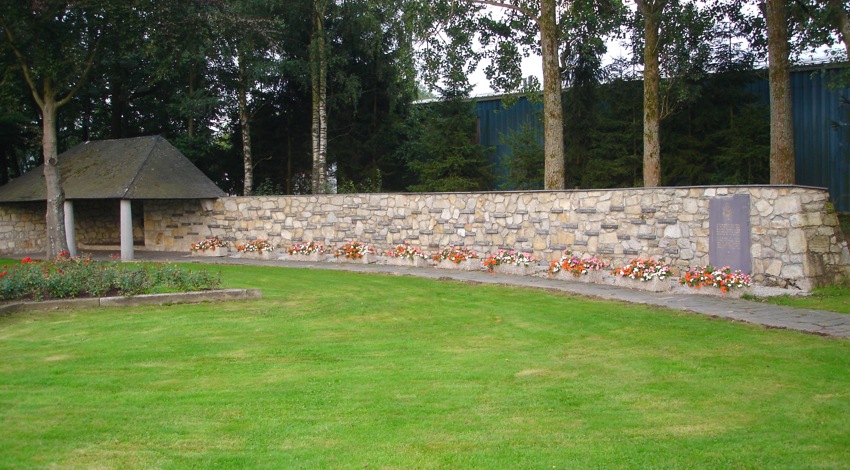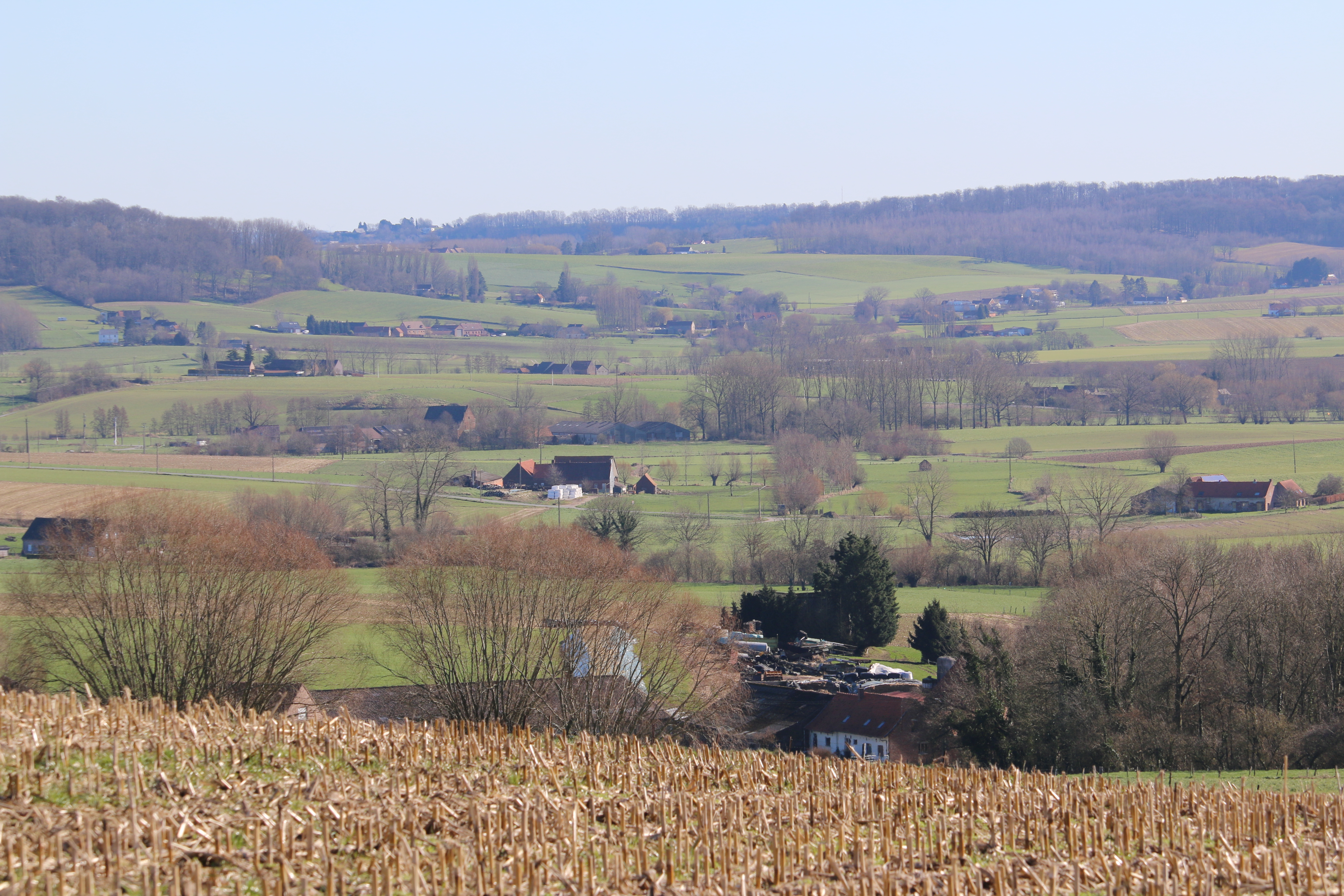|
Bévercé
Malmedy (; , historically also ; ) is a city and municipality of Wallonia located in the province of Liège, Belgium. On January 1, 2018, Malmedy had a total population of 12,654. The total area is 99.96 km2 which gives a population density of 127 inhabitants per km2. The municipality consists of the following districts: Bellevaux-Ligneuville, Bévercé (including the hamlets of Baugnez and Xhoffraix), and Malmedy. Under the complex administrative structures of Belgium, which has separate structures for territorial administration and for language community rights, Malmedy is part of Wallonia and of the French Community of Belgium. But since it has a German speaking minority, it is one of Belgium's municipalities with language facilities (or "municipalities with facilities"). Malmedy and Waimes are the two municipalities in the French-speaking part of Wallonia with facilities for German speakers. The population of Malmedy is approximately 95% French speakers and 5% ... [...More Info...] [...Related Items...] OR: [Wikipedia] [Google] [Baidu] |
Xhoffraix
Xhoffraix ( Jean-Marie Pierret, ''Phonétique historique du français et notions de phonétique générale'', Louvahin-la-Neuve, Peeters, 1994, p. 106. (French language pronunciation)">ref group=n>Jean-Marie Pierret, ''Phonétique historique du français et notions de phonétique générale'', Louvahin-la-Neuve, Peeters, 1994, p. 106. (French language pronunciation) ofrê or HyofrêJean Haust, Enquête dialectale sur la toponymie wallonne, Vaillant-Carmanne, Liège, 1940-1941, p. 1. ]) is a village of Wallonia in the municipality of Malmedy, district of Bévercé, located in the Liège Province, province of Liège, Belgium. Xhoffraix is located in the foothills of the High Fens The High Fens (; ; ), which were declared a Nature reserve, nature reserve in 1957, are an upland area, a Plateau, plateau region in Liège Province, in the east of Belgium and adjoining parts of northwestern Germany, between the Ardennes and the ... region, along a national road connecting Malmedy to ... [...More Info...] [...Related Items...] OR: [Wikipedia] [Google] [Baidu] |
Baugnez
Baugnez is a hamlet of Wallonia in the municipality of Malmedy, district of Bévercé, located in the province of Liège, Belgium. It is notable as being the site of the Malmedy massacre during the Second World War World War II or the Second World War (1 September 1939 – 2 September 1945) was a World war, global conflict between two coalitions: the Allies of World War II, Allies and the Axis powers. World War II by country, Nearly all of the wo .... Baugnez is situated two miles southeast of the town of Malmedy, on route N62 (E421) between Malmedy and Ligneuville. It stands at the crossroads between N62 (Route de Waimes) and N632. After Baugnez the Route les Waimes follows N632 to Waimes and N62 becomes Route de Luxembourg. In December 1944 the crossroads at Baugnez was the site of the massacre of more than 70 American prisoners of war by Waffen SS troops under the command of Joachim Peiper. The site is marked by a memorial comprising a low stone wall b ... [...More Info...] [...Related Items...] OR: [Wikipedia] [Google] [Baidu] |
Warche
The Warche is a river in eastern Belgium (province of Liège). From its source at Losheimergraben on the Belgian- German border, it flows roughly west about , across the south of the Hautes Fagnes region. It passes through the town of Malmedy, and the artificial lakes of Robertville and of Bütgenbach are formed by dams on the Warche. It is a right tributary of the river Amblève, which it joins east of Stavelot. In the past the Warche used to flow northward from Bévercé, following the current Trô Maret valley, to continue through the current Eau Rouge valley. This last valley is much larger than can be expected from such a small flow, still representing the original Warche valley. In that time the Warche confluenced with the Amblève at Stavelot. Later on, probably during the last ice age the Warche adopted its current position, flowing through the Malmedy graben In geology, a graben () is a depression (geology), depressed block of the Crust (geology), crust of ... [...More Info...] [...Related Items...] OR: [Wikipedia] [Google] [Baidu] |
Liège Province
Liège ( ; ; ; ; ) is the easternmost province of the Wallonia region of Belgium. Liège Province is the only Belgian province that has borders with three countries. It borders (clockwise from the north) the Dutch province of Limburg, the German states of North Rhine-Westphalia and Rhineland-Palatinate, the Luxembourgish canton of Clervaux, the Belgian Walloon (French-speaking) provinces of Luxembourg, Namur and Walloon Brabant and the Belgian Flemish (Dutch-speaking) provinces of Flemish Brabant and Limburg. Part of the eastern-most area of the province, bordering Germany, is the German-speaking region of Eupen-Malmedy, which became part of Belgium in the aftermath of World War I. The capital and the largest city of the province is the city of the same name, Liège. The province has an area of , and a population of 1.12 million as of January 2024. History The modern borders of the province of Liège date from 1795, which saw the unification of the Principali ... [...More Info...] [...Related Items...] OR: [Wikipedia] [Google] [Baidu] |
Saint Remacle
Remaclus (Remaculus, Remacle, Rimagilus, also called Remaclus von Stablo; died 673) was a Benedictine missionary bishop who is venerated as a saint. For his life, see Vita Remacli Episcopi at Abbatis, in: Monumenta Germaniae Historica, Scriptores rerum Merovingicarum, 5 Life Remaclus grew up at the Aquitanian ducal court and studied under Sulpitius the Pious, bishop of Bourges. In 625 he became a Benedictine monk at Luxeuil Abbey and was later ordained a priest. Around 631 Eligius founded Solignac Abbey and sent for monks from Luxeil, among them Remaclus, who became the first abbot. The abbey followed the rule as at Luxeil. Audoin wrote that Solignac quickly gained importance. It became particularly known for its silversmith's workshop. Remaclus was then given charge as well of the abbey of Cougnon, in the duchy of Luxemburg. He served as an advisor to Sigebert III of Austrasia and persuaded him to establish the double-monastery of Malmedy in 648 and Stavelot in 650. Remac ... [...More Info...] [...Related Items...] OR: [Wikipedia] [Google] [Baidu] |
Hainaut Province
Hainaut ( , also , ; ; ; ; ), historically also known as Heynault in English, is the westernmost province of Wallonia, the French-speaking region of Belgium. To its south lies the French department of Nord, while within Belgium it borders (clockwise from the north) on the Flemish provinces of West Flanders, East Flanders, Flemish Brabant and the Walloon provinces of Walloon Brabant and Namur. Its capital is Mons (Dutch: ''Bergen'') and the most populous city is Charleroi, the province's urban, economic and cultural hub, the financial capital of Hainaut and the fifth largest city in the country by population. Hainaut is one of the two only Belgian provinces whose capital is not its largest city; the other one is Walloon Brabant. Hainaut has an area of and as of January 2024 a population of over 1.36 million. Another notable city is Tournai (Dutch ''Doornik'') on the Scheldt river, one of the oldest cities in Belgium and the first capital of the Frankish Empire. H ... [...More Info...] [...Related Items...] OR: [Wikipedia] [Google] [Baidu] |
Solignac Abbey
Solignac Abbey, or the Abbey of Saint-Peter and Saint Paul of Solignac, is an abbey in Solignac, near Limoges, in Haute-Vienne. It was founded around 631 AD by Saint Eligius (Éloi). The present buildings date to the 12th century, but have been modified many times since then. The abbey was dissolved during the French Revolution and the buildings were put to new uses, including a prison, boarding school, porcelain factory and seminary. As of 2021 there were plans to restore it back to its original function as a monastery. History of the abbey Foundation Solignac Abbey was founded by Saint Eligius of Noyon who asked King Dagobert I for the village of Solemniacum, (the land of Solignac) to found a monastery. The abbey was founded in 631 or 632, on 22 November in the tenth year of Dagobert's reign. The foundation is made in honour of the apostles Peter and Paul, the martyrs Pancrace and Denys and their companions, the saints and confessors Martin, Médard, Rémi and Germain. ... [...More Info...] [...Related Items...] OR: [Wikipedia] [Google] [Baidu] |
Moselle Franconian
Moselle Franconian (; ) is a West Central German language, part of the Central Franconian languages area, that includes Luxembourgish. Overview Moselle Franconian is spoken in the southern Rhineland and along the course of the Moselle, in the Siegerland of North Rhine-Westphalia, throughout western Rhineland-Palatinate and Saarland, Luxembourg, the south of the German-speaking Community of Belgium and in the neighboring French département of Moselle (in Arrondissement of Boulay-Moselle). The Transylvanian Saxon dialect spoken in the Transylvania region of Romania Romania is a country located at the crossroads of Central Europe, Central, Eastern Europe, Eastern and Southeast Europe. It borders Ukraine to the north and east, Hungary to the west, Serbia to the southwest, Bulgaria to the south, Moldova to ... is derived from this dialect as a result of the emigration of numerous " Transylvanian Saxons" between 1100 and 1300, primarily from areas in which the ... [...More Info...] [...Related Items...] OR: [Wikipedia] [Google] [Baidu] |
Princely Abbey Of Stavelot-Malmedy
The Princely Abbey of Stavelot-Malmedy, also Principality of Stavelot-Malmedy, sometimes known with its German name Stablo, was an Hochstift, ecclesiastical principality of the Holy Roman Empire. Princely power was exercised by the Order of Saint Benedict, Benedictine abbot of the imperial double monastery of Stavelot and Malmedy, founded in 651. Along with the Duchy of Bouillon, Duchy of and the Prince-Bishopric of Liège, Prince-Bishopric of , it was one of only three principalities of the Southern Netherlands that were never part of the Spanish Netherlands, later the Austrian Netherlands, which after 1500 were assigned to the Burgundian Circle while the principalities were assigned to the Lower Rhenish–Westphalian Circle, Lower Rhenish Imperial Circle. As a prince-abbot, the abbot of Stavelot-Malmedy sat on the Ecclesiastical Bench of the College of Ruling Princes of the Imperial Diet (Holy Roman Empire), Imperial Diet alongside the prince-bishops. Along with the handful o ... [...More Info...] [...Related Items...] OR: [Wikipedia] [Google] [Baidu] |
Cleric
Clergy are formal leaders within established religions. Their roles and functions vary in different religious traditions, but usually involve presiding over specific rituals and teaching their religion's doctrines and practices. Some of the terms used for individual clergy are clergyman, clergywoman, clergyperson, churchman, cleric, ecclesiastic, and vicegerent while clerk in holy orders has a long history but is rarely used. In Christianity, the specific names and roles of the clergy vary by denomination and there is a wide range of formal and informal clergy positions, including deacons, elders, priests, bishops, cardinals, preachers, pastors, presbyters, ministers, and the pope. In Islam, a religious leader is often known formally or informally as an imam, caliph, qadi, mufti, sheikh, mullah, muezzin, and ulema. In the Jewish tradition, a religious leader is often a rabbi (teacher) or hazzan (cantor). Etymology The word ''cleric'' comes from the ecclesia ... [...More Info...] [...Related Items...] OR: [Wikipedia] [Google] [Baidu] |








